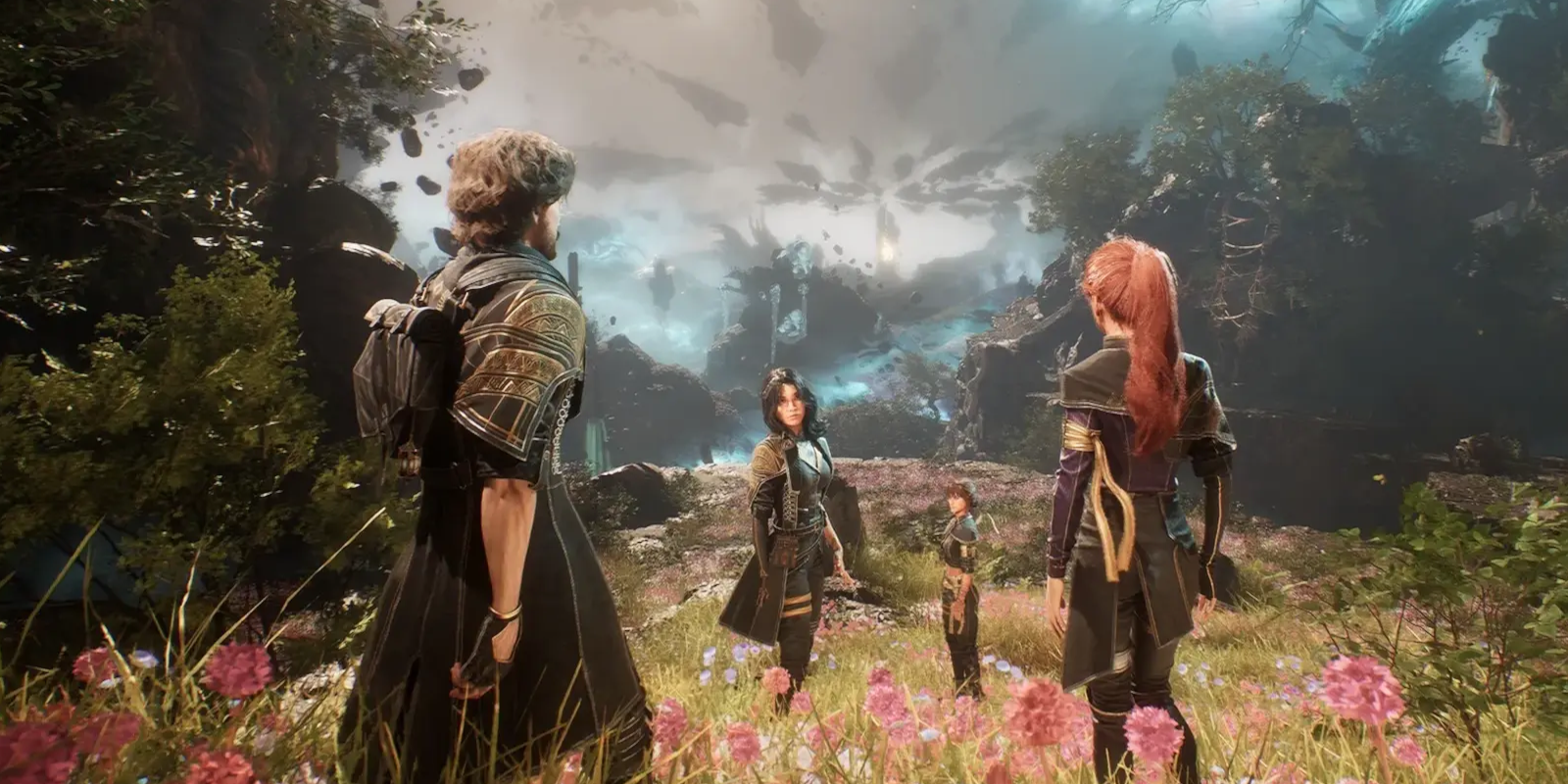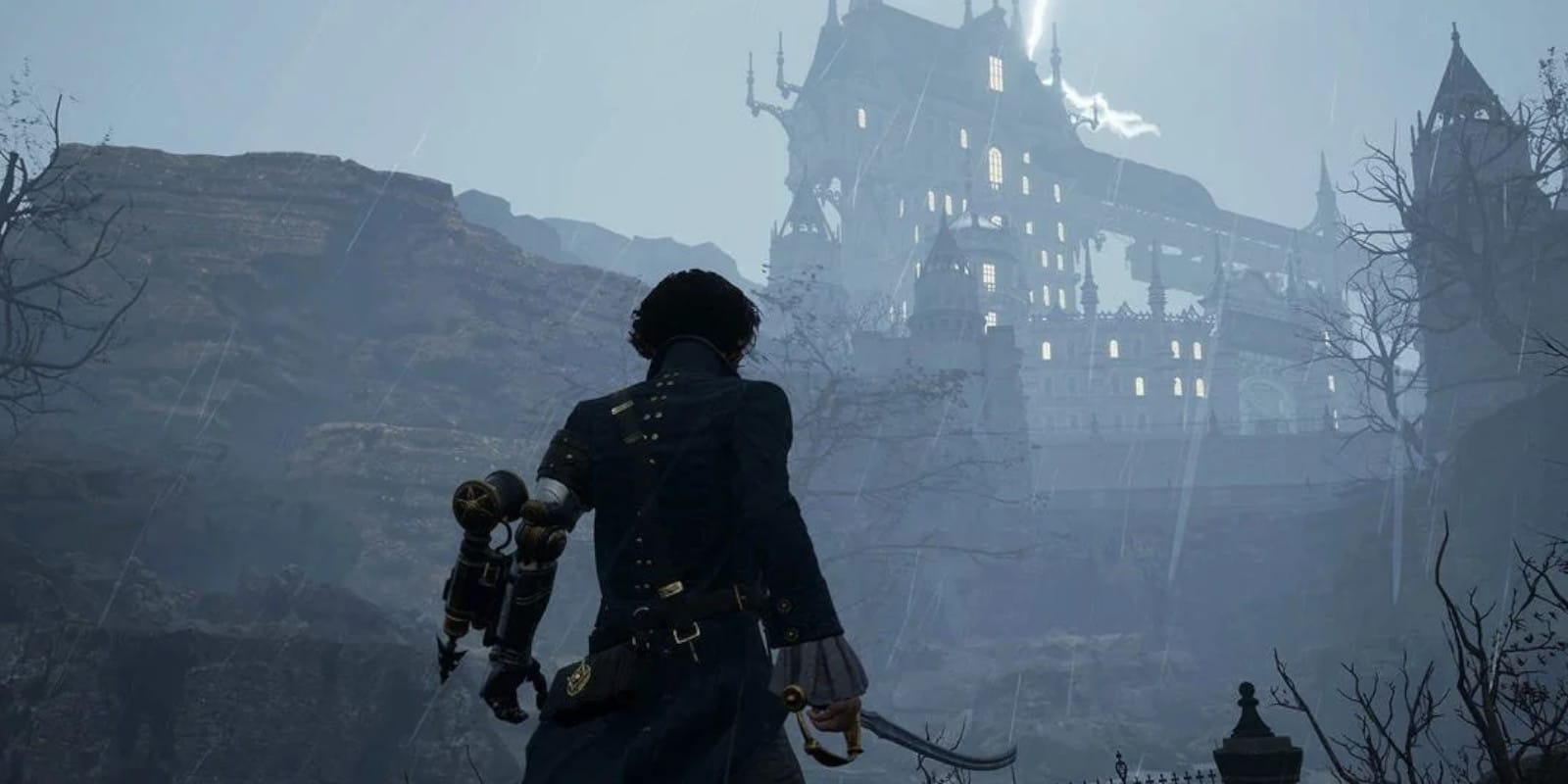Warning: The following contains spoilers for “Dragon Age: The Veilguard” and its romance sub-plots.
I had just finished up a pretty big fight, helping my team’s dragon hunter, Taash, solve their personal crisis. When I returned to The Lighthouse, I checked the map and noticed something odd: Lucanis had the quest-indicative “!” over his head, but he was in Neve’s room with her.
I entered to find Lucanis alone, expecting Neve. He’s proudly proclaiming he’s brewed her a fresh pot of coffee. I tease him about waiting for Neve because Rook (the in-game designation for the player character, just so you know) knows what’s going on — he had told Lucanis earlier in the game he should confess his feelings for Neve, after all.
As it turns out, he doesn’t have to. Neve, ever the detective, had already sussed out his feelings. It wasn’t too hard, given all the coffee, pies, and midnight visits. But she reciprocates. I get a truly satisfying game notification: because Neve and Lucanis have resolved their problems, they are free to admit their feelings for each other.
Bioware Gameplay And Pairing the Spares

My squadmates are an item now, and I love it because it feels so incredibly earned. Lucanis is an assassin possessed by a demon, who, not 40 hours earlier, I broke out of an underwater prison. Neve is a fellow Shadow Dragon, but she’s been sour on me ever since I chose to save Lucanis’s home of Treviso early in the game over the Shadow Dragon home of Minrathous (Rook, I rationalized, would trust the Shadow Dragons to protect Minrathous and view the potential of Treviso’s water supply being blighted as a bigger long-term problem than a Venatori invasion). They’ve both got a lot of baggage, and they both aren’t terribly open about it with anyone.
But I’ve been putting in the time. I’ve helped Neve restore some semblance of order at Minrathous’ bustling cultural hub, Dock Town, leading her to regain some trust in me. And just a few hours earlier, I helped Lucanis come to terms with the demon bound to him so he could save his adoptive grandmother. Now, because I helped them, they’re able to be open with each other.
It’s a tale as old as time, lovingly dubbed by the internet as “pairing the spares.” Bioware does this particular trope like no one else, though we’ve only seen it a couple of times. Yeah, other developers have built incredibly complex schedules and routines for NPCs, but Bioware handles this unique situation better than most. Really, though, long-time readers can already tell where this is going, as I’m just looking for an excuse to talk about “Mass Effect” some more.
I romanced Liara in my first “Mass Effect” playthrough, but on subsequent playthroughs, I usually romanced Tali’zorah, a Quarian pilgrim whom Shepard helps in proving her worth to the colony. She’s not a romance option in the original game, but by “Mass Effect 2,” Shepard can form a bond with her.
But on one particular playthrough, for whatever reason, I didn’t romance her. And I found something magical happened: Tali started a relationship off-screen with Garrus, the stubbornly loyal Turian soldier who I befriended with Tali’s help.
I have to paint the whole picture here for you. When I replayed the trilogy for Legendary Edition, I was struck by just how young everyone seemed in the first game, but Garrus and Tali, in particular, bordered on a sense of naivete. By the time of “Mass Effect 3” and their blossoming romance, the two are battle-hardened war heroes, both revered and dismissed by their people.
The pairing starts small; you’ll catch the two having conversations over the com, but that’s not too unusual. But as the game progresses, the conversations keep popping up. And then, right before the final battle on Earth, Shepard can interrupt the two sharing a tender moment before they face death. It’s a beautiful moment that highlights one of my favorite aspects of Bioware’s games: the natural ways in which the game forces you to interact with and immerse yourself in the world.
Bioware has taken this a step beyond with “Dragon Age: The Veilguard” and its approach to romance, and while I won’t spoil any of them here, there are multiple pairings that can occur within your team, all based on how you’re interacting with people and who you’re pairing up with.
This, to me, is what makes Bioware so special. Sure, I love the mechanics and the role-playing. The combat is incredible. But there’s a level of immersion that Bioware’s RPGs allow me to have, wherein things are happening in a living, breathing world around me, that you just don’t get enough of these days.
I’m sure “Dragon Age: The Veilguard” has plenty more romance options for me to stumble upon, but I’m not quite there yet. I’m maybe three or four missions from finishing the game, and I’ll surely have more thoughts about it when I’m done. But for now, I’m enjoying getting to see my team come together of their own accord — thanks to only a little meddling from me.
Discover more from Homeworld
Subscribe to get the latest posts sent to your email.





